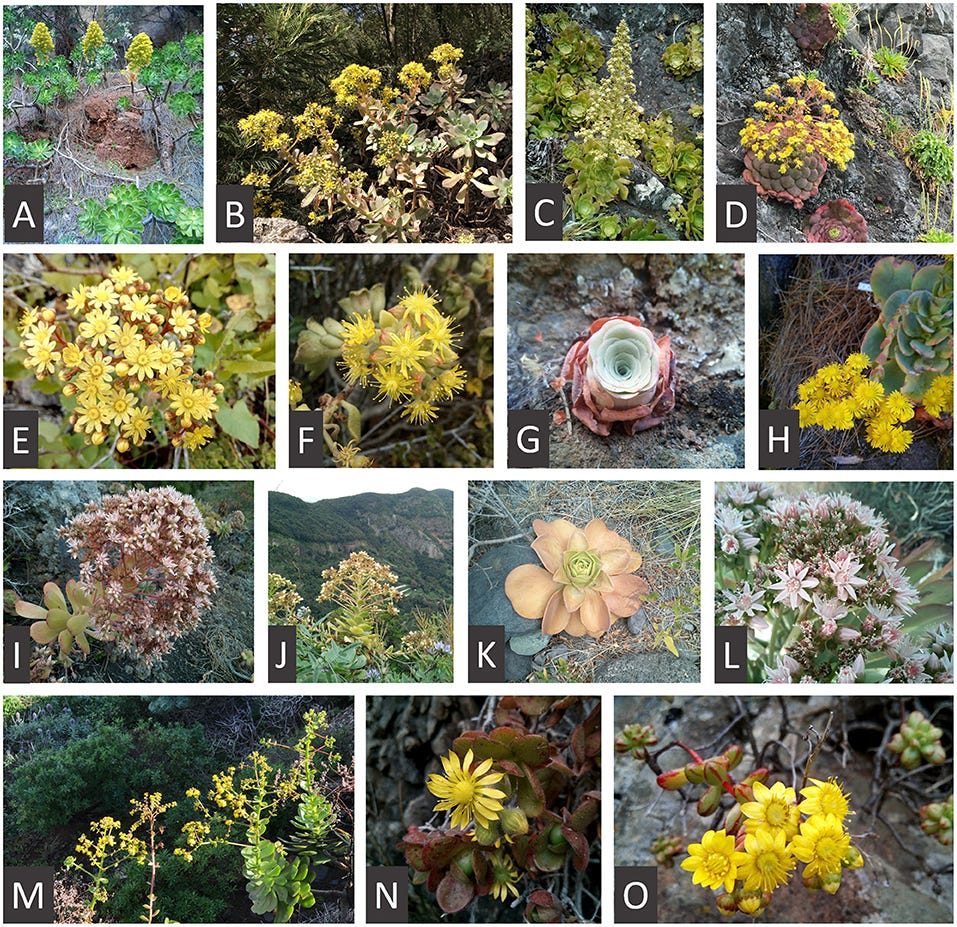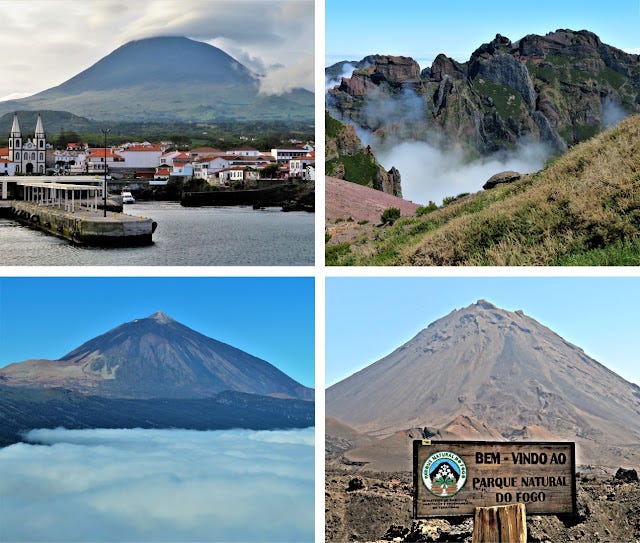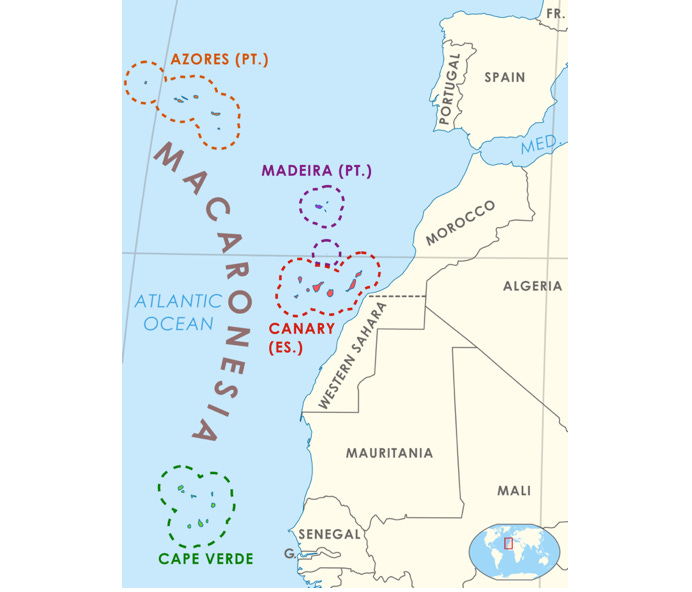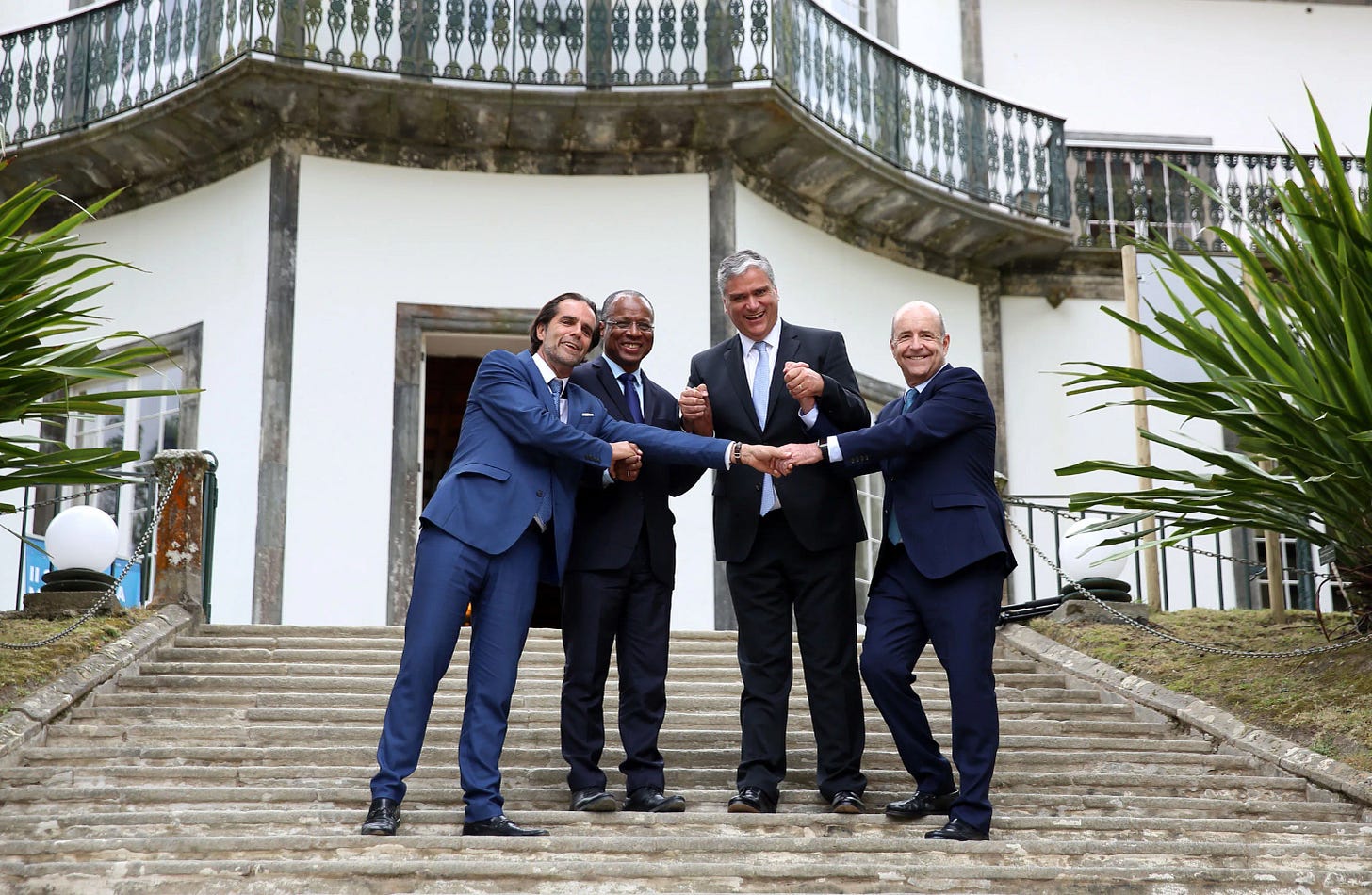Off the coast of Europe and Africa, one can find a collection of North Atlantic archipelagos including Azores, Madeira (together with the Savage Islands), Canary Islands and Cape Verde. Seemingly disconnected and not sharing much more than a volcanic origin, a contrasting landscape and a moderate climate, these 41 islands and islets - 28 of them, inhabited - make up Macaronesia.
The term Macaronesia is far from new, as it references the Fortunate Isles, known in the era of Ancient Greece as islands to the west of the Strait of Gibraltar, but also as a mythological place of reincarnation. The term was only applied, in its modern sense, in 1835.
The origin of this name is attributed to the British botanist Philip Barker Webb, around ad 1835, although it seems that he intended the term to encompass only Madeira, the Selvagen archieplago (Savage Islands) and the Canaries, the nucleus of the region (Stearn, 1973). Engler (1879) may have been the first author to include the Azores in the Macaronesian region, and it was not until 1961 that Pierre Dansereau argued for the inclusion of the Cape Verde islands (Vanderpoorten et al., 2007)… [1]
This collection of archipelagos isn’t the only way to frame these islands. Aside from Macaronesia, there’s an existing grouping of eight ultra-peripheral regions in the EU: five French overseas departments, two Portuguese autonomous regions and one Spanish autonomous community (the latter two are also part of Macaronesia). Therefore, it could easily be said that Cape Verde, being the only non-EU entity, is the main beneficiary of the Macaronesia cooperative framework, in that all other members receive EU financial support via the European Regional Development Fund.
Summit
The Summit of the Archipelagoes of Macaronesia (aka Cimeira dos Arquipelagos da Macaronesia, or CAM) is made up of an intergovernmental body aimed at creating “a space for political consultation and development cooperation.” The initial aim was to gather every two years to discuss common interests - such as air and maritime transport and safety, technology, oceanographic research, higher education, science, culture and environment - but the follow-up to the inaugural summit only occurred in several years later.
At the first Macaronesia Summit, which took place in 2010 in Mindelo, Cape Verde, the creation of the Macaronesia Region was officialized. The second, and most recent, Summit took place in 2018, on the island of São Miguel, in the Azores. The third meeting - if the same schedule is followed - would only occur in 2026.
Conservation

While regional cooperation was only made official in 2010, concerted EU conservation efforts for the region under its care began in 2001. The Natura 2000 regulations protect 5000 km2 of land and sea. Cape Verde’s own conservation efforts include 120 km2 - or 2.9% - of the country, plus a dismal 5 km2 of its much larger marine area [2].
Macaronesia constitutes just one of Europe’s 11 biogeographical regions. Furthermore, “the islands may represent a mere 0.3 % of the EU territory but they host 19 % of the habitat types and 28 % of all the plants listed in the Habitats Directive” [3]. All of the relevant Spanish and Portuguese protected habitat types and species can be found in the following list.
These native fauna and flora were brought to the island via long-distance dispersal, as none of the North Atlantic archipelagos were part of any continent. Some species are unique for other reasons such as mass deforestation across Europe. Some of the last remaining Laurisilva forests - designated a UNESCO world heritage site - exist in Madeira.
Conservation efforts even include more minor preocupations such as nomenclature. There are contrasting views within the scientific community about how to refer to floristic regions that contain biogeographical overlap, more specifically in regard to Cape Verdean plant species that should not be included in the term Macaronesia, when they are, in fact, Saharo-Sindian. Disagreements over phytogeography aside, much effort has gone into protection of these unique climates.
Cooperation

In regards to what might result one day from the intergovernmental cooperation between these territories, one might look towards the Andean Migration Statute. Citizens of the Andean Community of Nations - Bolivia, Colombia, Ecuador, and Peru - now have freedom of movement to more easily travel as tourists and to obtain residency in the other member states.
On the other hand, complications may arise in regards to the freedom of movement from the poorer Cape Verde to the richer EU member states, however smaller examples of cooperation, such as study abroad (PT) agreements, are possible. A list of other such proposals, as shown here (PT), shed light on what a more integrated socioeconomic ecosystem would look like. The third Macaronesia Summit could be an opportune moment to implement these ideas.
Further reading:




